In part 1 of this series I shared about Learning Modalities, which refers to the sensory method that a person prefers to use for taking in information when learning. Just to recap, visual learners prefer to be able to see what they are learning, and auditory learners retain information best if they hear what they are learning. Kinesthetic learners need to be moving or touching what they are learning about to most effectively learn.
A person’s learning style goes a little more in depth into their strengths and personality as well.
Learning Styles:
A child’s learning style refers to their natural strengths, personality and the ways they learn best. Dr. Anthony F. Gregorc created a model of learning styles that is very popular among homeschoolers. There are other learning style models, but I think that Gregorc’s is one of the best and most helpful.
Gregorc’s model of learning styles is based on the belief that there are usually two different ways people perceive the world and there are two different ways that people tend to deal with the information that they have learned. Most people use both ways of perceiving the world and both ways of storing that information, but they typically prefer one over the other in each area. Let’s review the two ways to perceive things and the two ways to order the information learned:
1. Perception: Dr. Gregorc says there are two points of view or ways people perceive the world:
A. Concrete perception: a person who views the world concretely registers information directly through the five senses (sight, hearing, smell, taste and touch) and sees primarily what is obvious, they don’t tend to look for hidden meaning. They tend to think “It is what it is”
B. Abstract perception: the person who views the world abstractly often visualizes things that can’t be seen, they use their intuition and imagination to see more than what is actually there. They tend to think “it’s not always what it seems”
- Ordering: Dr. Gregorc says there are two ways that people tend to order the information they take in:
A. Sequential ordering – those who order sequentially tend to organize information in a very orderly, step by step way. They tend to think logically and like to follow a plan. They prefer to “Follow the steps” when putting something together, for example.B. Random ordering-those who order things randomly tend to organize information in chunks without a specific order. They may skip steps in a procedure but they still get the desired results. They often are more impulsive and spontaneous. They prefer to “get it done!”
The four learning styles:
Dr. Gregorc went on to create four combinations or learning styles for these different ways people perceive the world and the way they order the information that they take in:
1. Concrete Random (perceive things concretely and order information randomly)
2. Concrete Sequential (perceive things concretely and order the information sequentially)
3. Abstract Random (perceive things abstractly and order the information randomly)
4. Abstract Sequential (perceive things abstractly and order the information sequentially)
A great resource to learn more about these learning styles is Cynthia Tobias‘ book “The Way They Learn.” Mary James, in her book “Smoothing the Way,” also covers learning styles very well and has given these learning styles much easier names to remember:
1. Concrete Random= Wiggly Willy or Wilma
2. Concrete Sequential=Perfect Paul or Paula
3. Abstract Random=Sociable Sam or Sue
4. Abstract Sequential=Competent Carl or Carla
Keep in mind that most children won’t show a clear preference for a learning style until they are about eight years old. Prior to the age of eight, children often fit in the Wiggly Willy or Wilma style. Occasionally you’ll be able to see some preferences in a younger child, but don’t be surprised if you can’t until they are older.
Also, most people tend to have characteristics that fit into two of these learning styles. They might be most dominant in one style, but also high in another. Sometimes as adults, we can even find ourselves having characteristics in all the learning styles! This is probably because we’ve had to adapt and have taught ourselves to learn in all the different ways because we were taught in different ways throughout our lives.
Here’s a description of each of the learning styles with some information on how to teach a child with each learning style:
- Concrete Random/Wiggly Willy/Wilma:
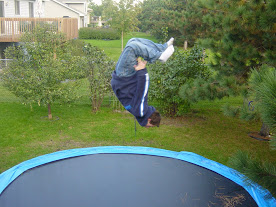 The Wiggly Willy or Wilma usually has a high need for activity. They are curious, realistic, creative, innovative, instinctive, adventurous, and often have a short attention span. They like challenges, and tend to be competitive. They often have a great sense of humor and are fun and challenging kids to teach. They tend to fight structure and routine and are restless, needing variety in their day.They tend to dislike being confined, having too much structure, not having choices, and long school days. Some areas they will need help in are self-discipline and developing good study habits. Because they are sometimes impulsive, they may need help on decision making and planning.Teaching methods that works well for the Wiggly Willy/Wilma are the unit study approach; delight directed learning; anything hands-on and multi-sensory; literature based (as long as they can move around while being read to); and the Charlotte Mason approach.Some Teaching tips for the Wiggly Willy/Wilma:
The Wiggly Willy or Wilma usually has a high need for activity. They are curious, realistic, creative, innovative, instinctive, adventurous, and often have a short attention span. They like challenges, and tend to be competitive. They often have a great sense of humor and are fun and challenging kids to teach. They tend to fight structure and routine and are restless, needing variety in their day.They tend to dislike being confined, having too much structure, not having choices, and long school days. Some areas they will need help in are self-discipline and developing good study habits. Because they are sometimes impulsive, they may need help on decision making and planning.Teaching methods that works well for the Wiggly Willy/Wilma are the unit study approach; delight directed learning; anything hands-on and multi-sensory; literature based (as long as they can move around while being read to); and the Charlotte Mason approach.Some Teaching tips for the Wiggly Willy/Wilma:
- Make it fun!
- Use games and contests
- Do experiments – anything hands on
- Use CD’s and DVD’s
- Adventure stories
- Use computers: games, curriculum, etc.
- Use Math manipulatives
- Have a lot of variety and change how you do things at times
- Give them choices in their day
- Be prepared- their attention span is short!
- Have a sense of humor and be flexible
- Encourage them with what they did right, be careful not to only tell them what they are doing wrong
- Concrete Sequential/Perfect Paul/Paula:
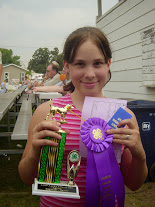 The Perfect Paul or Paula tends to be hardworking, conventional, accurate, stable, dependable, consistent, factual, organized, and efficient. They do well at what they do and are usually successful! They like routine, they like to know what is expected and they like things organized. They can be somewhat perfectionistic, and may get upset when they make mistakes.The Perfect Paul/Paula tends to dislike changes in the schedule, having to be creative, unclear expectations, and a disorganized learning environment. They may need your help in learning to be flexible and also finding balance with their perfectionism.Teaching methods that works well for the Perfect Paul/Paula are the Textbook approach, the Unit Study approach, the Classical approach, or the Literature based approach. Actually any method of teaching can work as long as it is organized and planned out.
The Perfect Paul or Paula tends to be hardworking, conventional, accurate, stable, dependable, consistent, factual, organized, and efficient. They do well at what they do and are usually successful! They like routine, they like to know what is expected and they like things organized. They can be somewhat perfectionistic, and may get upset when they make mistakes.The Perfect Paul/Paula tends to dislike changes in the schedule, having to be creative, unclear expectations, and a disorganized learning environment. They may need your help in learning to be flexible and also finding balance with their perfectionism.Teaching methods that works well for the Perfect Paul/Paula are the Textbook approach, the Unit Study approach, the Classical approach, or the Literature based approach. Actually any method of teaching can work as long as it is organized and planned out.
Teaching tips for the Perfect Paul/Paula:
- give clear assignments and expectations,
- give samples and examples for what you want them to do
- use drill and memorization
- use timelines to help them process historical info
- have a regular schedule; but teach them flexibility
- prepare them when the schedule is going to change
- keep their learning environment organized
- Abstract Sequential/Competent Carl/Carla:
 The Competent Carl and Carla child tends to have a very single-minded focus. They are serious, objective, knowledgeable, thorough, structured, logical, deliberate, systematic, and often uncomfortable in social situations.The Competent Carl/Carla doesn’t like being rushed when doing their school work. They dislike busy work, especially if they already understand the concepts. They sometimes also struggle with excessive emotional interaction. They may need your help knowing how to handle social situations. Occasionally they may be highly opinionated and can tend to monopolize the conversation if they feel strongly about something.
The Competent Carl and Carla child tends to have a very single-minded focus. They are serious, objective, knowledgeable, thorough, structured, logical, deliberate, systematic, and often uncomfortable in social situations.The Competent Carl/Carla doesn’t like being rushed when doing their school work. They dislike busy work, especially if they already understand the concepts. They sometimes also struggle with excessive emotional interaction. They may need your help knowing how to handle social situations. Occasionally they may be highly opinionated and can tend to monopolize the conversation if they feel strongly about something.
Teaching methods that work well for the Competent Carl/Carla are the Classical approach, the Unit Study approach, Delight-directed studies, and Literature based. Any curriculum that is well organized and logical will work well for the Competent Carl/Carla. Provide them with the resources and this child will love to study something they are interested in.
Teaching tips that work well for the Competent Carl/Carla:
- if possible, avoid rushing them
- give them logical, step by step instructions
- use computers for their learning (games, curriculum)
- help them with social situations
- don’t give them busy work when they’ve mastered a concept
- listen to what they have to say – they need to be heard
- use logic and reason when dealing with them
- let them do some research on a topic and teach the rest of the family
- Abstract Random/ Sociable Sam/Sue:
![scan025[3]](https://hswithconfidence.com/wp-content/uploads/2015/12/scan0253-300x200.jpg) The Sociable Sam or Sue tends to be sensitive and compassionate. They tend to be relationship oriented and are often perceptive and sentimental. They are also imaginative, spontaneous, flexible, intuitive, sensitive to criticism, and good with people.The Sociable Sam and Sue dislikes detailed assignments, complex subjects, not being allowed creativity and flexibility, and being left to themselves. They may need your help in learning to deal with conflict rather than avoiding it. They also may need training on managing their time.Teaching methods that work well for the Sociable Sam/Sue are the Unit Study approach, Literature based studies, and the Charlotte Mason approach. They like to work with people so group projects are fun for them.Teaching tips for the Sociable Sam or Sue:
The Sociable Sam or Sue tends to be sensitive and compassionate. They tend to be relationship oriented and are often perceptive and sentimental. They are also imaginative, spontaneous, flexible, intuitive, sensitive to criticism, and good with people.The Sociable Sam and Sue dislikes detailed assignments, complex subjects, not being allowed creativity and flexibility, and being left to themselves. They may need your help in learning to deal with conflict rather than avoiding it. They also may need training on managing their time.Teaching methods that work well for the Sociable Sam/Sue are the Unit Study approach, Literature based studies, and the Charlotte Mason approach. They like to work with people so group projects are fun for them.Teaching tips for the Sociable Sam or Sue:
- They like to work with someone (not alone a lot)
- Don’t be more detailed than you have to be
- Small group projects are fun for them
- Use historical fiction and biographies to teach history
- Give lots of praise and encouragement
- Help them to learn time management
- Give relevance to what they are studying – why is it important for them to know this?
- Be careful about having too many social activities – they want it but need alone times too
- Reading aloud sessions with you appeal to them
- Like public presentations – find ways for them to do this
- Be careful with criticism – if they feel they can’t please you, they might quit trying
The best way to determine which learning styles fit your child best is to observe them as you try different approaches. I’ve also put together an informal learning style evaluation that you can use to help you determine their learning style. I have two: one is for the child to complete themselves (age 8 or above); and the other is for you as their parent to do based on what you perceive they would say about themselves (any age). I’d love to send the learning style evaluation to you free – just let me know by submitting your e-mail in the box on this page.
The most important thing to do as you try to understand your child better is to seek the Lord and ask Him to help you understand how your child learns best. He created them and He knows what they need and will gladly reveal it to you as you seek Him!
Information taken primarily from:
“Smoothing the Way” by Mary James
“The Way They Learn” by Cynthia Tobias

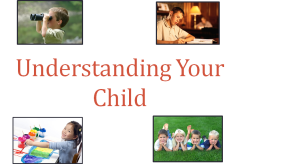

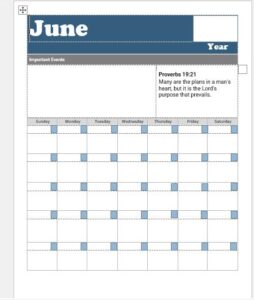
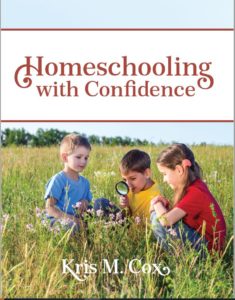


thanks a ton !!!
Thank you very much. This really helps me to understand the differences between the learning styles. And some of what I can do for each one.